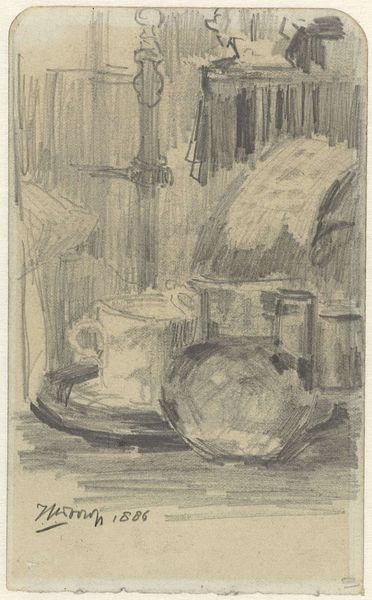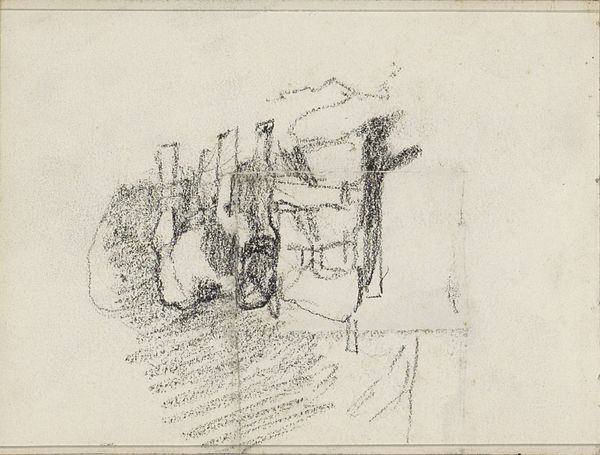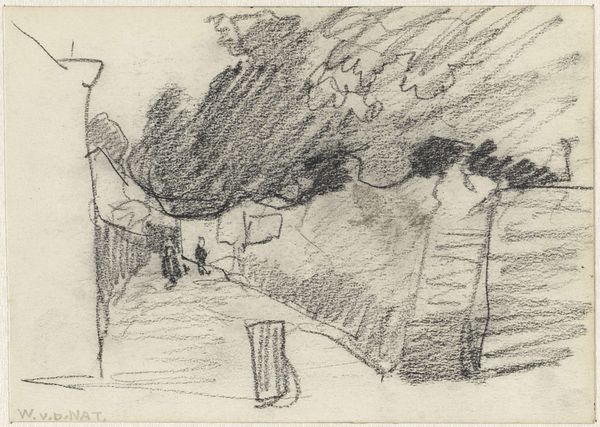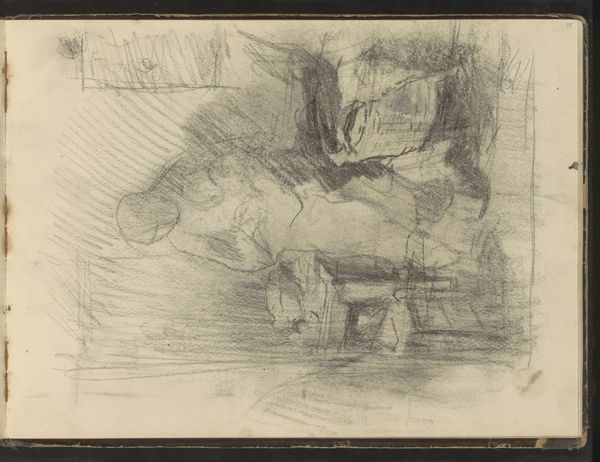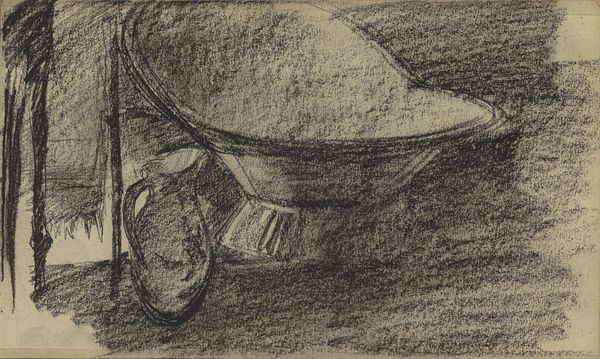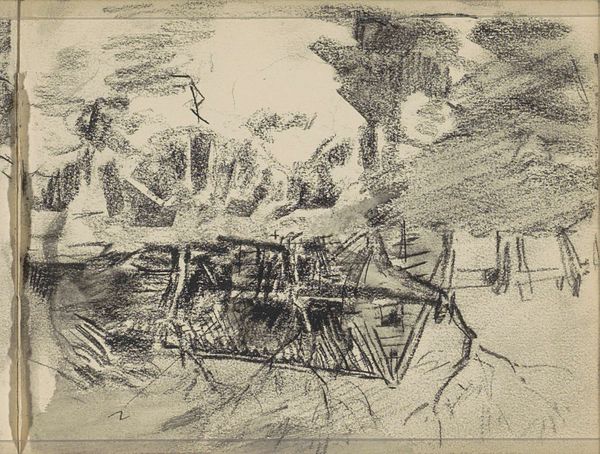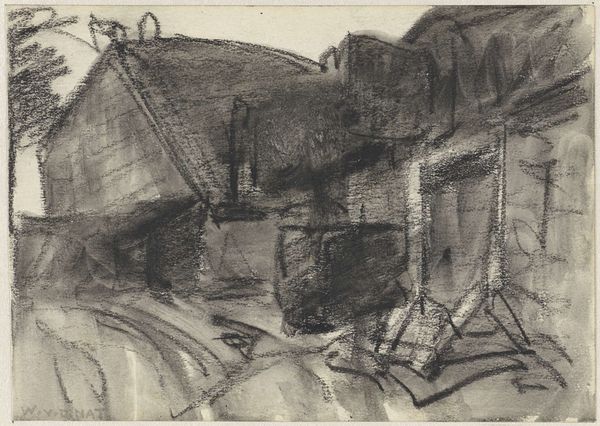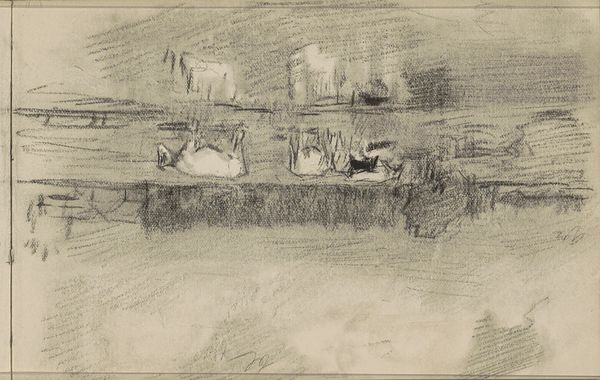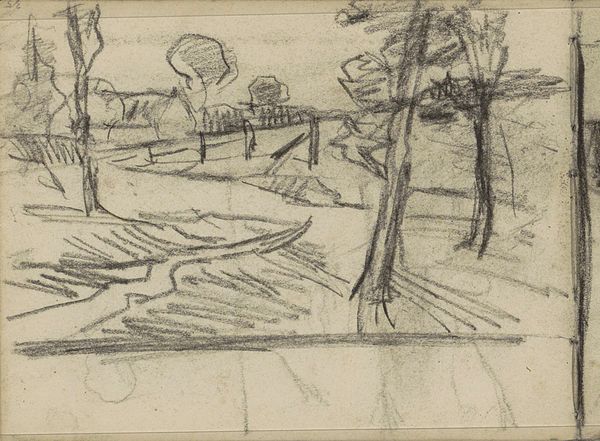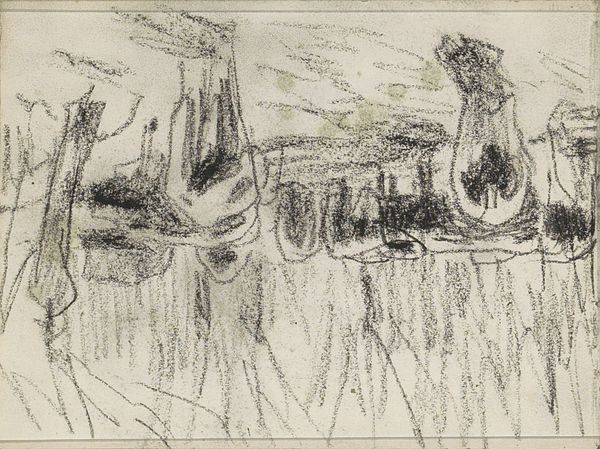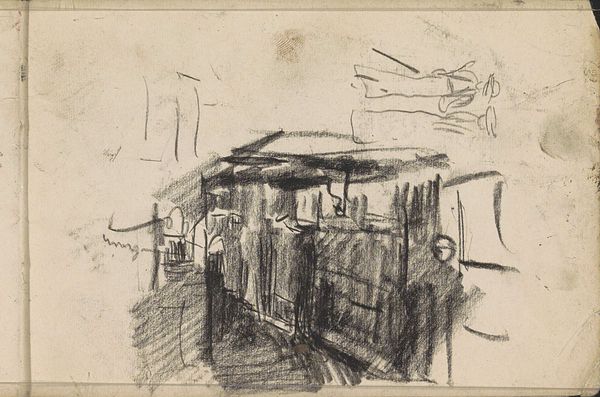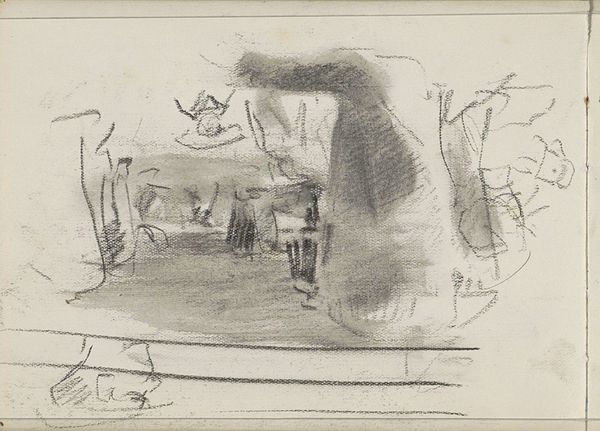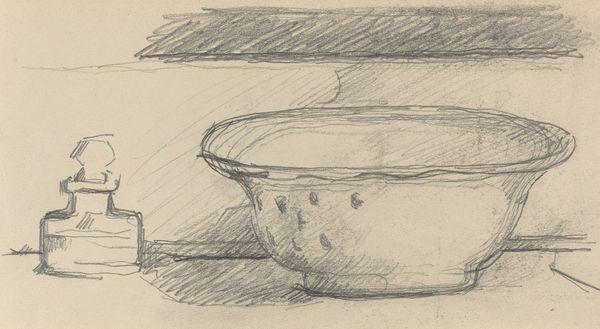
Copyright: Rijks Museum: Open Domain
Curator: Well, hello there. I’m struck immediately by the intimate and somewhat chaotic energy in this charcoal drawing. There’s a certain tenderness in the way the light dances across these commonplace objects, don't you think? Editor: Yes, chaotic intimacy hits the mark. This piece, attributed to Isaac Israels, likely dating somewhere between 1875 and 1934, and currently residing here at the Rijksmuseum, is indeed deceptive. It appears to be a humble still life titled “Pots, jugs, and other tableware.” Curator: Exactly, deceptive. Because isn't it more than *just* tableware? Look at how he renders each object with a distinct personality. They're practically characters in a silent play. Like that chunky pitcher in the foreground—almost daring you to pick it up. Editor: I see it, but the choice of representing domestic objects is also revealing of societal expectations around the domestic labour primarily done by women at the time. While not overtly political, still life inherently nods at the everyday performance of women, and its inherent worth or lack thereof. Curator: That’s interesting. I never quite thought of it that way. For me, it almost feels like Israels is riffing on Dutch masters, but giving it a casual, modern twist. The swift charcoal lines create such immediacy – as if he captured this tableau in a fleeting moment. Editor: The visible, gestural marks certainly suggest a fleeting moment. But those very visible artistic choices destabilize conventional composition. Think about who has historically been afforded the luxury of ‘capturing the fleeting moment’. Often that right is bound by gender and class privilege. Israels was born into privilege, and these items, likely used by those working under that privilege, give further social context. Curator: Point taken. The piece is not so simple after all! Despite this sketch’s subdued tones, I can’t help feeling enlivened when facing it, somehow invited into that brief moment. I also imagine that a great breakfast was in the works just moments later, so, is that *domestic bliss* I see playing out, ultimately? Editor: Perhaps you’re right, it invites you into a simple sort of observation of these pieces that were used in quiet intimate moments every day; still, thinking more broadly about gender and labour invites another perspective. Curator: Perhaps the most exciting works of art, though, like this piece, are the ones that allow for many levels of contemplation! Thanks for revealing so much for me to consider today. Editor: Always happy to expand and rethink; thank you for your refreshing outlook on everyday items, and helping bring into the light how artworks remain actively charged by our lived encounters.
Comments
No comments
Be the first to comment and join the conversation on the ultimate creative platform.
